Golumpki (Gołąbki, Polish Stuffed Cabbage Rolls)
on Apr 25, 2018, Updated Jun 23, 2024
This post may contain affiliate links. Please read our disclosure policy.
Golumpki (Polish cabbage rolls) have many names. Whether you call them pigs in a blanket, cabbage rolls, or by their beloved Polish name, Gołąbki, these stuffed cabbage rolls are a testament to the comforting power of traditional Polish cuisine.
Golumpki, which holds a special place in the celebrations and family gatherings, brings together simple ingredients in a dish that’s more than the sum of its parts.

This stuffed cabbage recipe is one of our most popular Polish dishes and an easy recipe for using a variety of ground meat.
Table of Contents
What is Golumpki?
Golumpki (also spelled golabki) are traditional Polish cabbage rolls that are a staple in Eastern European cuisine. The name “golumpki” is a term of endearment in Polish, derived from “gołąb,” which means little pigeon. Oddly, it refers to the shape and size of the rolls rather than any ingredient.
Our whole family agrees that this golumpki recipe is one of our favorite meals.
What Makes Our Golumpki the Best?
Our Golumpki recipe is not just about following steps; it’s about reliving memories and creating new ones. Each bite takes you back to a time when food was not just eaten but celebrated.
It’s a recipe that has evolved but always kept its soul. This classic comfort food is a favorite family meal in our house that we hope our kids will teach their kids how to make.
Our family does a lot of Polish cooking. We show you how we make authentic Polish dumplings (pierogies), lazy golumpki, and even golumpki soup (cabbage roll soup.) Traditionally, Polish golumpki is made with ground beef and ground pork.
The base of this Polish recipe comes from Scott’s great-grandmother, who was born a Polish Jew and escaped the ravages of the Nazi regime by changing her identity and fleeing to America. It was not until after her death, some 50 years later, that her true identity was discovered.

This Polish golumpki recipe was handed down through generations, is steeped in tradition and perfected with a touch of modern culinary technique.
It’s a casserole dish that has comforted our family through countless mid-west winters and is often the centerpiece at gatherings, be it weddings, first communions, or the holiday feast table.
But through the years, Scott has made some flavorful modifications, for which we have received a lot of criticism from purists. Our golumpki recipe uses Campbell tomato soup for the tomato sauce.
Our kids like Scott’s spin on adding Italian sausage and Italian seasoning for another flavor boost to our golumpki.
These variations drive our readers wild, but they are also the key to making this the best golumpki you’ll ever eat!
How to Make Golumpki (Gołąbki, Stuffed Cabbage)
(The full golumpki recipe is in the recipe card below.)
This authentic Golumpki recipe involves stuffing cabbage leaves with a mixture of ground chuck, Italian sausage, and bacon, complemented by rice and bread crumbs.
The rolls are then baked in a tomato-based sauce. Preparation includes boiling and softening the cabbage, mixing the filling, and assembling the rolls, with a total cook time of 2 hours.
Ingredients:
- Cabbage: 1 large head of green cabbage
- Meats: 1 lb ground chuck, 1 lb Italian sausage (See below for variations of meats.)
- Optional Flavor Enhancers: 1/2 lb bacon, crumbled
- Aromatics: 1 large white onion, chopped
- Binding Agents: 1 egg, beaten, 1 cup cooked rice, 1/2 cup Italian breadcrumbs
- Sauce: 1 family-size can of tomato soup (preferably Campbell’s), 3 oz tomato paste, a pinch of sugar
- Seasoning: 1 tsp salt, 1 tbsp black pepper, 3 cups white vinegar (for boiling the cabbage)
This recipe is designed to serve six and can be made ahead and frozen.
Cooking Steps:
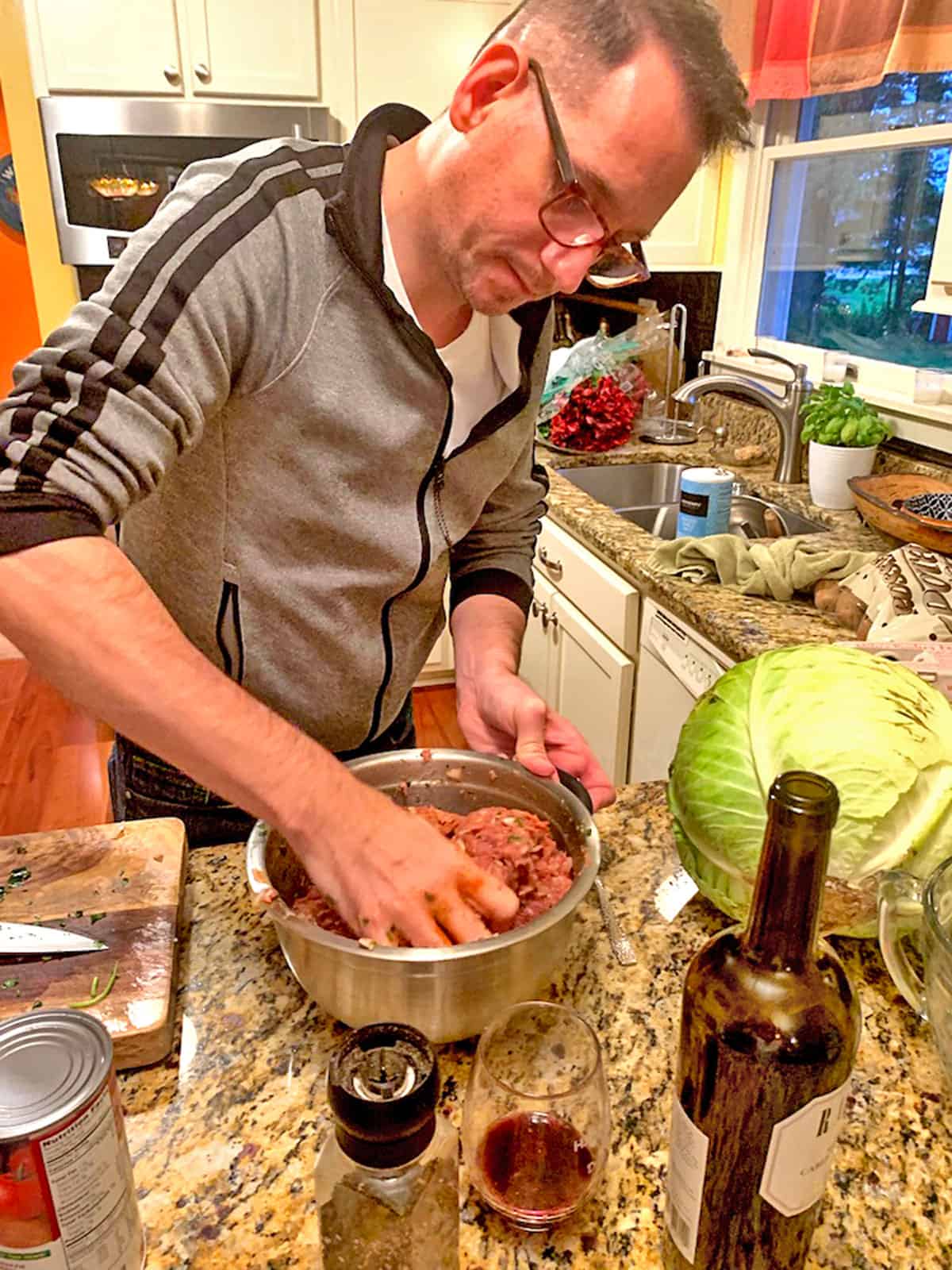
Prepare the Cabbage:
- Place whole cabbage along with the vinegar in a large pot of boiling water until the leaves are pliable and al dente. Cool and separate leaves, trimming the tough central vein with a paring knife.
Make the Meat Filling:
- In a large bowl, mix the meats, bacon, onion, egg, rice, and breadcrumbs. Season well.
Make the Sauce:
- Combine the soup, tomato paste, and sugar. Add a little water to thin it out. Mix it together.
Form the Rolls:
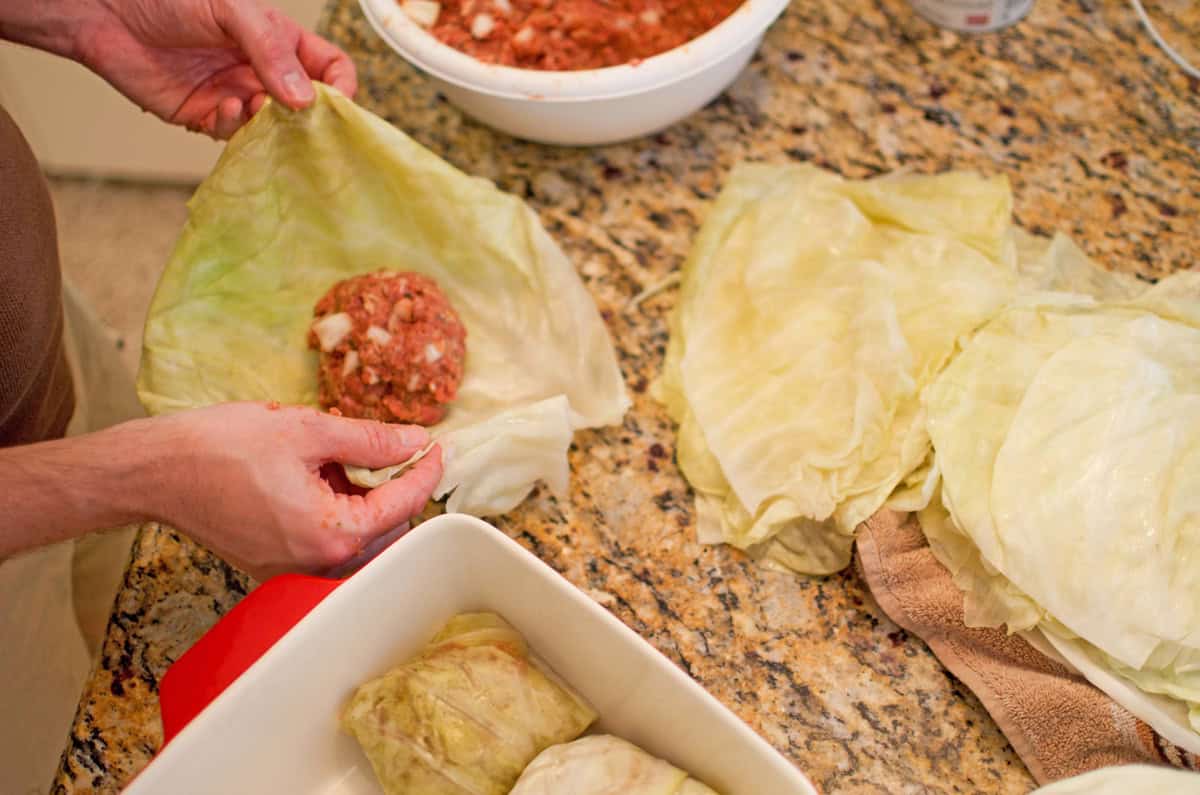
- Place a portion of filling on each cabbage leaf, fold, and roll.
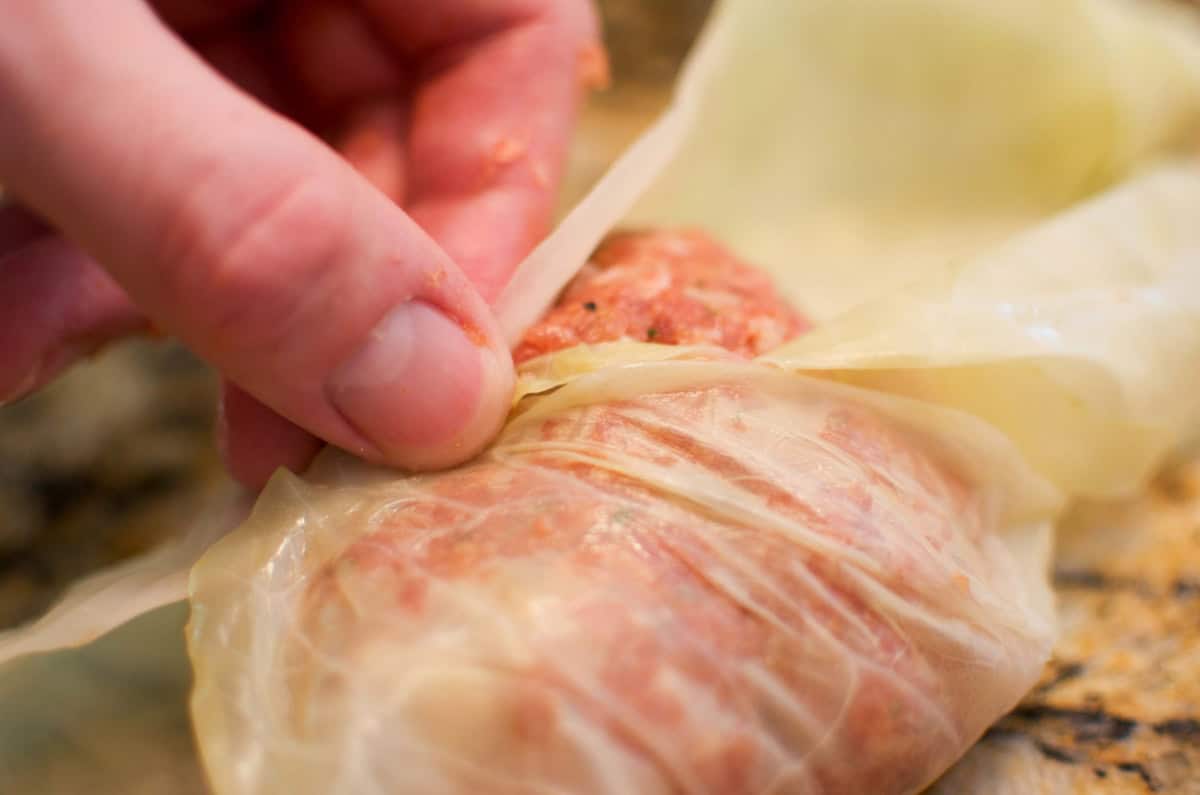
- If you have remaining cabbage leaves, line the bottom of the pan and spread some tomato sauce over those leaves.
- Place the cabbage rolls seam side down in a roaster or Dutch oven. If you run out space, you can stack the rolls on top of each other.

- Add the sauce on top of the cabbage rolls.

Slow Cooker Golumpki
You can make golabki (stuffed cabbage rolls) in a slow cooker. Using a slow cooker can make the process easier and allows the flavors to meld beautifully as they cook gently over several hours. Here’s a basic method to prepare them:
- Prepare the recipe as above:
- Cover and cook on low for about 6-8 hours or on high for about 3-4 hours. The golabki are done when the meat is cooked through and the cabbage is tender.
- Serve:
- Enjoy your golabki with a side of bread, extra sauce, and perhaps a dollop of sour cream or a sprinkle of fresh herbs.
This method is particularly handy if you want to prepare a meal ahead of time or if you’re hosting and want to keep the kitchen free for other tasks. The slow cooker takes care of everything, letting you focus on your guests or other dishes!
What to Serve with Golumpki
These Polish cabbage rolls can be served as a main dish. For side dishes, we love to serve a loaf of crusty bread and some homemade potato salad. A fresh salad or a vegetable side dish works well, too!
Recipe Tip for Slow Crock Pot Golumpki
Slow cookers add moisture to the golumpki as it cooks, so you don’t need to thin the sauce as much as we suggest in the oven-baked golumpki recipe. Also, when using the slow cooker recipe, you don’t need to line the cabbage rolls with leftover cabbage leaves for additional moisture and steaming. The slow cooker will do this.
Substitutions and Variations
- Italian breadcrumbs are optional for making golumpki. You can also use plain breadcrumbs. Either way, they make a good binder in addition to the egg.
- For the beef mixture, you can combine a pound of ground beef with a half pound of ground pork and a half pound of ground veal. We usually use a mixture of beef and Italian sausage because we usually have both on hand.
- Tomato sauce can be used instead of tomato soup for the golumpki sauce.
- Fresh parsley (or dried parsley) is often used. If you don’t like the Italian season, leave it out!
- If we use lean beef, we like to use bacon in the recipe, This adds a little fat and flavor to the golumpki.

More Tips for Perfect Golumpki
- Flavor Tip: Adding bacon to the meat mixture introduces a depth of flavor that complements the lean beef and sausage.
- Make-Ahead: The hardest part about making Golumpki is the time that each step takes. You can save some time and prepare these the day before. Just refrigerate them overnight and the next day bake as directed.
- Serving Suggestion: Pair with mashed potatoes or a crisp salad for a full meal.
- When Cooking the Cabbage: The outer leaves will cook before the inner leaves. Start to pull off some of the outter leaves as they cook, so the whole cabbage head is cooked layer-by-layer.
- Cabbage Size: We prefer using a medium-sized cabbage to boil.
- Smaller heads of cabbage will cook faster because they are not as dense, and we don’t waste as much of the unused cabbage leaves. Also, smaller heads of cabbage will give you smaller cabbage rolls, which we prefer to the large ones.
Common Questions
Vinegar is an optional ingredient, but we have found that it removes some of the bitterness from the cabbage leaves. Vinegar will also brighten the color of the cabbage leaves.
For making golumpki, you can use a traditional roasting pan or a Dutch oven. You can even use a sealed casserole dish with foil. The baking dish should be covered and sealed to allow the savory cabbage rolls to roast and steam.
Allow the leftovers to cool, and keep them refrigerated in an airtight container
Yes, to freeze leftover golumpki, place the in a single layer in a zip-lock bag. Remove all air. This is a good method for meal planning and portion control.
To reheat these,take them out of the freezer the night before. Once they are defrosted you can reheat them in the microwave until heated through.
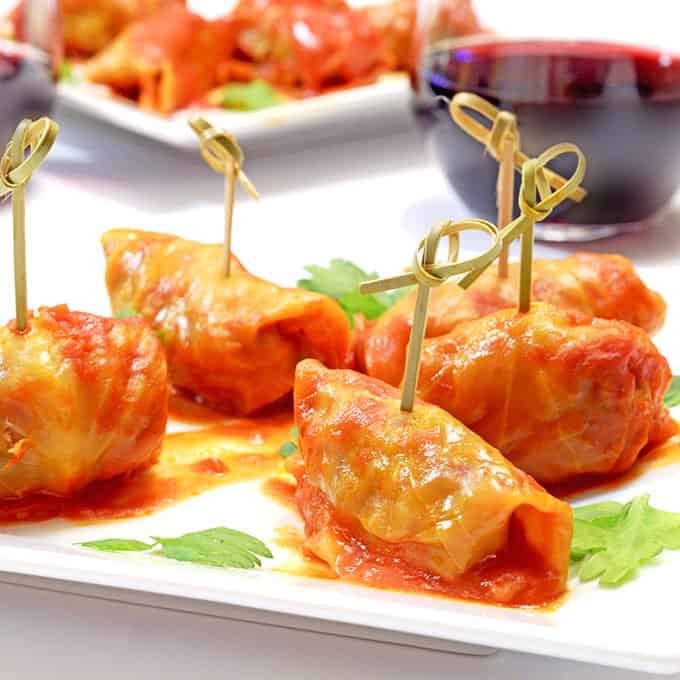
👨🍳 Tried this Recipe? Please leave a ⭐⭐⭐⭐⭐ rating in the recipe card below and leave a comment. We love hearing from our readers!
⏩ Stay in touch with us on social media by following us on Facebook, Pinterest, Instagram, and YouTube!
📬Get our Recipes delivered to your inbox for FREE!

Golumpki (Gołąbki, Stuffed Cabbage)
Equipment
Ingredients
- Cabbage head
- 1 lb Ground Chuck
- 1 lb Ground Italian Sausage
- 1/2 lb cooked and crumbled bacon
- A med to large white onion chopped
- An egg
- 1 cup cooked rice
- 1/2 cup Italian bread crumbs
- 1 Family size can Tomato Soup, I prefer Campbells
- 3 oz tomato paste
- pinch of sugar
- 1 tsp salt, adjust to taste
- 1 tbs pepper, adjust to taste
- 3 cups White Vinegar
Instructions
- Preheat oven to 350 degrees F.
- Put cabbage head in a large stock pot, add water to cover and then add white vinegar to the water.
- Place on stove on high heat and cover, bringing to a boil.
- Gently boil cabbage until leaves of cabbage soften and become pliable.
- Remove from stove and drain water from the pot. Set aside and allow cabbage head to cool.
- Once cabbage is cooled, remove the leafs from the cabbage head. Take a paring knife and cut the lower portion of the “vein” from the leaf. This vein is very tough and needs to be removed. It will make it much easier to roll the meat mixture in the cabbage leaf. Continue to do this until you remove as many leaves from the cabbage as you can.
- In a large mixing bowl combine ground chuck, sausage, crumbled bacon, chopped onion, egg, rice, bread crumbs and finally add the salt and pepper. Make certain to thoroughly combine the ingredients together. The “meat” mixture will be a similar consistency to meatloaf. It should be nice and moist. If it seems dry, add an additional egg.
- Lay a cabbage leaf down on a flat surface thus allowing you to roll it easier. Take some of the meat mixture and form into a large meatball. You may make these as large or as small as you prefer therefore choose the size of your preference. Place the meatball in the center of the cabbage leaf. Wrap the cabbage leaf around the meat mixture (see video above).
- Place the stuffed cabbage in a roaster with the wrapped edges down in the roaster. Repeat this process placing the Golumpki next to each other, until all of the meat mixture is used up.
- Mix tomato soup, tomato paste and also a pinch of sugar.
- Pour tomato soup mixture over the top of the stuffed cabbage and reserve a small amount to be used in the next step.
- If you have cabbage leaves remaining, cover the entire top of the stuffed cabbage in the roaster.
- Pour remaining tomato soup mixture on top of the cabbage that you lined the tops of the stuffed cabbage. This step will help steam the Golumpki that lies below and therefore will keep them nice and moist.
- Put a lid on top of the roaster and bake for approximately 1 1/2 hours.
Video
Notes
Cooking Tips
- Make as much of the sauce as you want; if you want more sauce with your golumpki.
- Be sure to fully cover the cabbage rolls with the sauce.
- If you have any remaining cabbage leaves, place a layer of them over the sauce-covered golumpki. This will help keep them from drying out and allow them steam during the baking process.
- Pour some of the remaining sauce on the top layer of cabbage leaves and add some black pepper. When these are done, they are great to eat.
- Cooking Time: If you have the time to go low and slow, drop the oven temperature down to 325° and cook for an additional couple of hours. This allows the flavors to be better absorbed during the cooking process.
- As long as the golumpki are covered by a layer of cabbage leaves, they should not dry out. You can check the golumpki throughout the cooking process to make sure the sauce isn’t cooking down (or reducing.) Add additional sauce throughout if you think that is necessary.
Nutrition
Nutrition information is automatically calculated, so should only be used as an approximation.
More Cabbage Recipes
Side Dishes
Easy Fried Cabbage Recipe
Side Dishes
Savory Cabbage and Bacon with Onion
Keto Recipes
Keto Enchiladas
Originally published on November 7, 2013. This golumpki recipe will live on for generations.
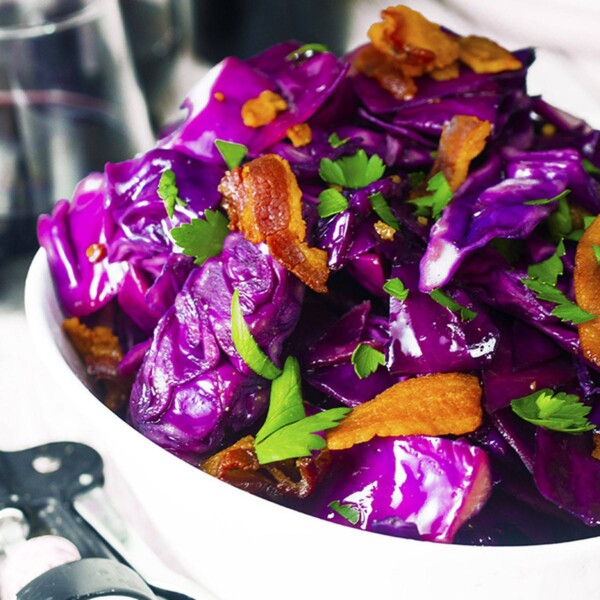
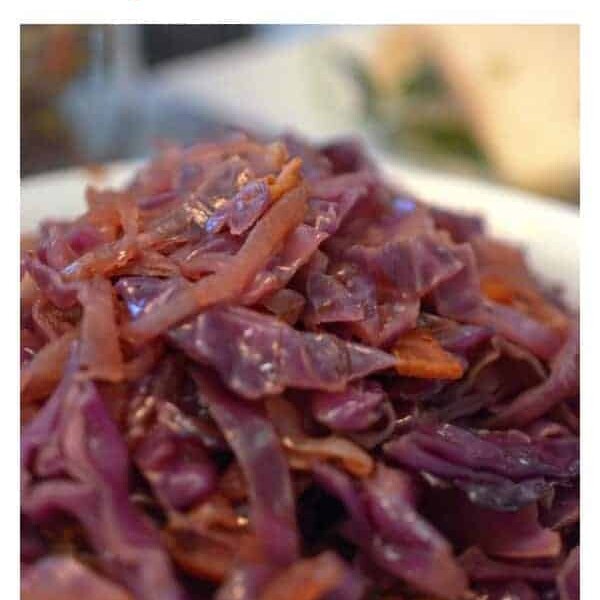


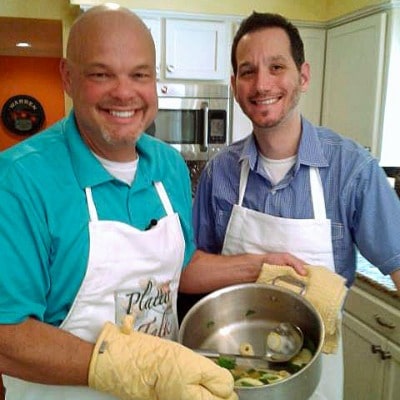











Have not tried the recipe but – Italian sausage? Italian bread crumbs? It may be good but not golumki. Using pork or breadcrumbs is goo. But Polish spices are not Italian
Hi Jessica, thanks for clarifying what constitutes the difference between Polish and Italian. When we originally wrote this Golumpki recipe in 2013, it rose to the very top of search rankings and held the number one position on Google for nearly 10 years. The additional Italian-flavored additives such as Italian suasage and Italian seasoning elevate this multi-generational recipe from a bland use of meat and cabbage to a dynamic-flavored meal that is loved by young and old alike, making it a great option for a family meal that even kids will enjoy.
Cooking is meant to be an art, and not a black and white formula. That being said, we always encourage our readers to make a recipe “their own.” I hope you try Scott’s family’s signature recipe. You can call it what you like but I promise you’ll find it to be delcious.
For our family, it’s also full of history, coming from Scott’s great-grandmother. She was a Polish Jew who fled from the terror of the Nazis and disguised her true identity which was not discovered until after her death some 50 years later. I feel certain this Golumpki recipe as we make it, will endure for generations to come.
My French-Canadian father made these all the time, while my Polish mother made French-Canadian tourtiere pies. I never liked cabbage so I’d always eat the filling. I tried making a batch about a year ago, and LOVED it. Now I need to make it again.
Thanks for the awesome comments, Michael! I hope you give these a try and for goodness sakes – isn’t time for a batch of your mother’s tourtiers? 🙂
U don’t put Italian sausage in Gombki !
Hi John! We love the added flavor that Italian sausage gives to golumpki; we would love for you to try it sometime!
Can i make mini cabbage rolls using 1/2 a cabbage leaf?
Yes, we’ve done this many times. You can make them as big or as small as you like.
An old polish trick for the cabbage is to core it, then freeze it for a day or so then bring it out and let it defrost and the leaves will be tender.
Before or after boiling it ?
you will not need to boil.
How did it come out? Lol I did the same thing.
Why the vinegar ?? For the cabbag
The vinegar is optional but we feel that it takes a bit of the bitterness out of the cabbage.
The recipe says 3 cups of vinegar but in the video, it looks like less. Can you please confirm the amount of water and vinegar?
Hi Christina, The amount of water depends on the size pot. Scoot adds enough vinegar until he dips a finger in and can taste it slightly in the water.
My husband usually makes this dish, however this Easter he is overseas, so…I have decided to give it try. I’ve already made a mistake and I am supposed to be bringing this dish tomorrow to a friends house. I precooked the meat thinking I could do this dish in two steps because besides making this there are other dishes I am bringing. Can I still stuff the cabbage with cooked meat? Do I still add the egg? I know cooking time will be less. Is there a way to salvage this?
Did you try this? Just wondering how it turned out. I’ll have to make this version and a vegan version so I’m hoping to prep as much as possible.